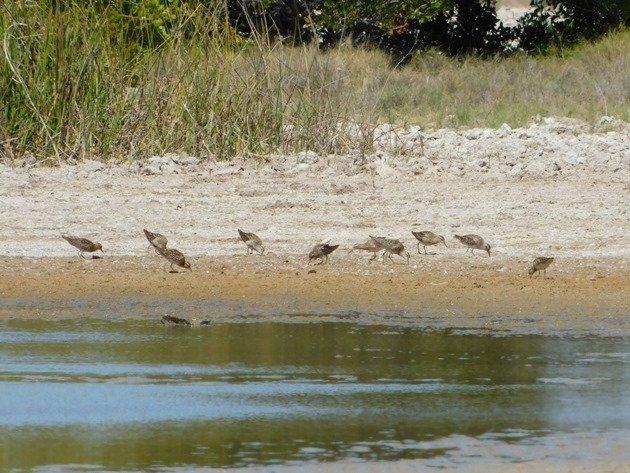
Over the last two weeks we have observed a huge number of migratory shorebirds return to our shores. They have mostly been absent for several months now, because they have been in the northern hemisphere. Hopefully they have had a successful breeding season in the north. Several migratory shorebirds with juvenile plumage are already on our beaches, so the arrival of both old and young birds is in full swing now. The shorebirds will continue to arrive over coming weeks and months and they will remain with us here in Australia until they head north once again next year to breed.
It has been such a dry year that Sharp-tailed Sandpipers are not just at the small remaining ephemeral lakes, but also on the beach among the other shorebirds. The header photo shows a small flock feeding on the mud near the coast at Willie Creek. On the mud they are well camouflaged, but once they move closer to the water they are more visible. They still have a golden colour to the top of their heads at this time of year. Grey Plover and Pacific Golden Plover are now also in the area.
Sharp-tailed Sandpiper
The northern end of Cable Beach is also starting to get busier with returning shorebirds. Red-necked Stint, Sanderling, Ruddy Turnstones, Whimbrel, Grey-tailed Tattlers and Common Sandpipers are joining our resident Red-capped Plovers.
Red-necked Stint, Greater Sand Plover and Ruddy Turnstone
Great Knot have started to return and join the Sooty Oystercatchers on the reef to feed. When the tide comes in and they can’t feed they all roost together until the tide goes back out again and once again they can feed. With ten metres of movement during our tides this week there is a lot of reef exposed at low tide, but there’s also a lot of time waiting for the tide to recede and expose the reef.
Sooty Oystercatcher and Great Knot
On our trip to Derby last week there were a couple of recently returned Eastern Curlew. Although they seem like a large shorebird they are significantly smaller than the Great-billed Heron!
Great-billed Heron and Eastern Curlew on the mud
It is also a good time of year to find Red-necked Avocet around Broome. They are on the beaches around Roebuck Bay and also at the ephemeral lakes and further afield there are good numbers at Halls Creek Poo Ponds. The shape of the bill of the Red-necked Avocet is quite incredible. The bill appears to be so delicate with the fine upward curvature, but functions so well when they feed. Red-necked Avocet move away from Broome during the winter months. How far the Red-necked Avocet travel is still somewhat of a mystery and there are significant numbers in the southern states of Australia.
Red-necked Avocet
Over the coming weeks we can continue to enjoy the return of thousands of shorebirds to our shores. Spring has sprung!
For those of you wondering…the Pied Oystercatcher family are doing well! Both chicks are growing fast and continue to feed with their parents. The size difference between the two chicks is still apparent, but no doubt they will eventually catch up with each other.


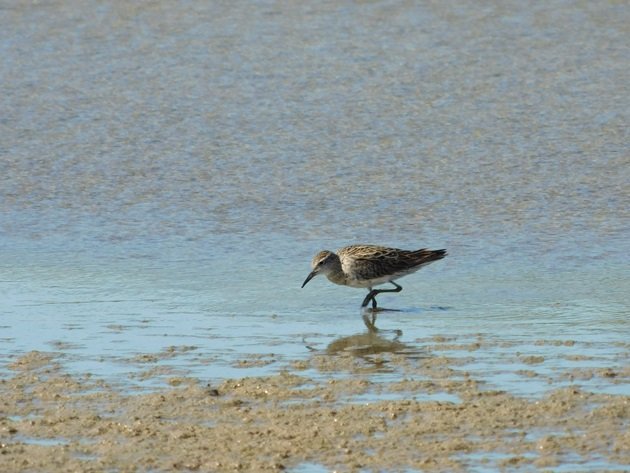
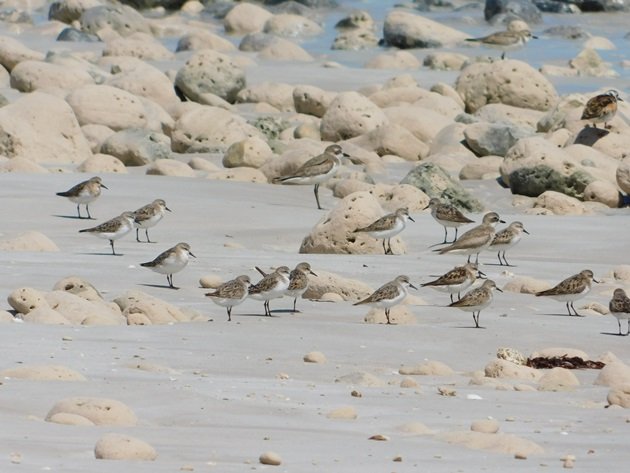
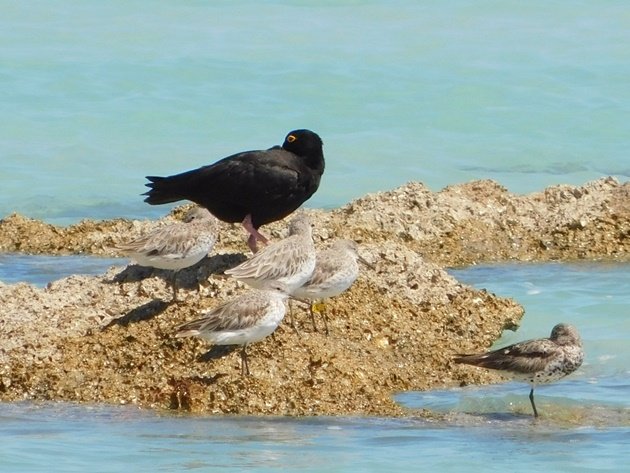
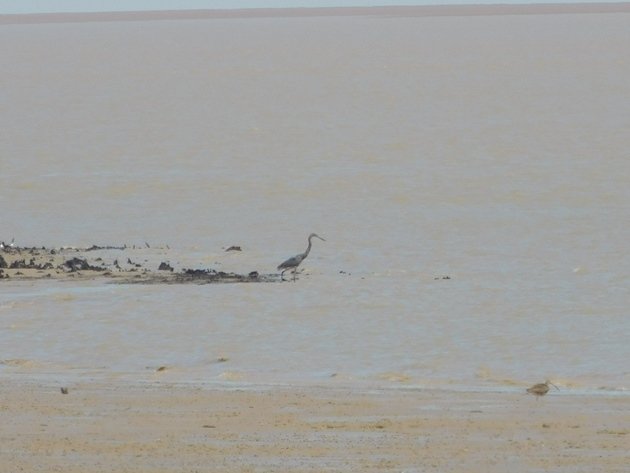
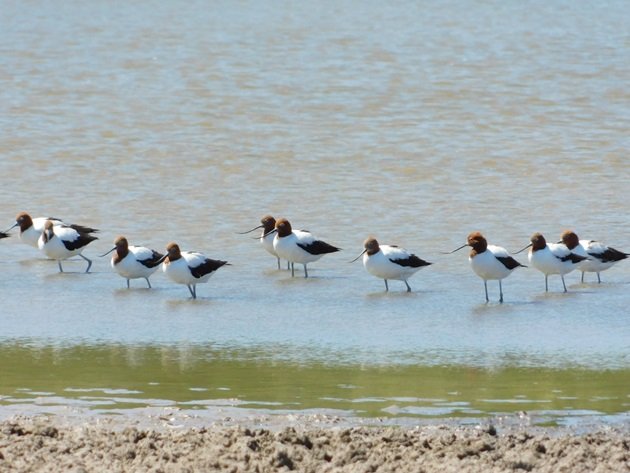
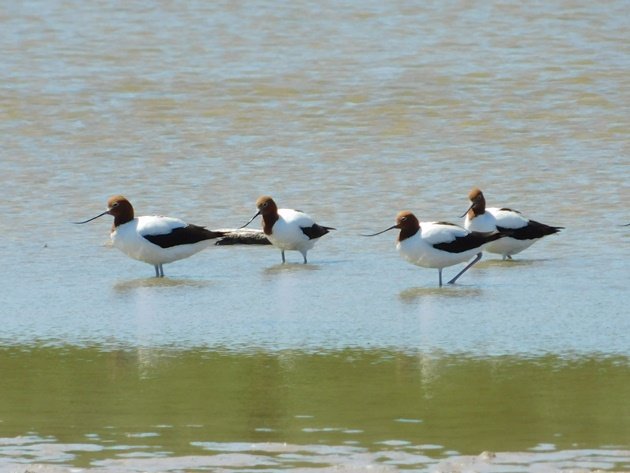











Leave a Comment